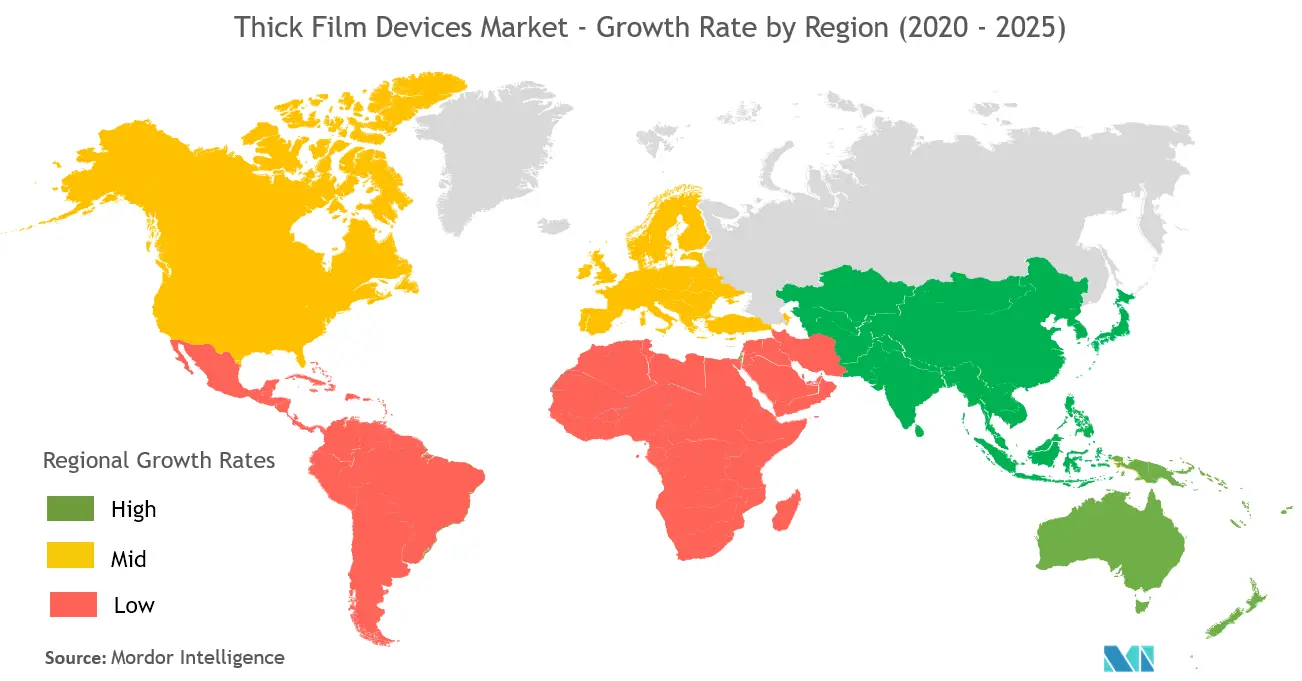Market Trends of Thick Film Devices Industry
This section covers the major market trends shaping the Thick Film Devices Market according to our research experts:
Automotive to Expected to Hold Significant Share
- Over the last two decades, the growing production of automobiles is a significant factor in driving market growth due to the high adoption of electrical and electronic devices in automotive manufacturing. In the United States, all heavy trucks must be installed with electronic logging devices (ELD) from the US Department of Transportation’s Federal Motor Carrier Safety Administration (FMCSA) by the end of 2019.
- These government regulations would increase the demand for thick film devices, and hence, may expand the studied market vendor’s growth scope further. For instance, Canada-based thick film heating element manufacturer, Datec Coating Corporation, was awarded a USD 1.3 million contract by the Innovation, Science and Economic Development Canada (ISED), a government organization that works toward improving investment scenario for several industries in Canada, for Automotive Supplier Innovation Program. In October 2018, the firm also received a significant investment by Germany-based E.G.O.- Group mainly for its manufacturing expansion.
- A new technology called thick-film-on-steel promises to yield a new class of resistors for a wide range of applications. Resistors made using the technology can operate at temperatures up to 400°C and target various automotive applications. The devices are produced by combining a thick ceramic dielectric glaze with stainless steel to form a three-layer product that can be created, molded, welded, and holes to be added for mounting.
- With the outbreak of COVID-19, automotive and consumer electronics are two of the most negatively affected end-users, which heavily use thick film devices. For instance, Fiat Chrysler’s first-quarter sales in the US have dropped by 10%, and General Motors sales for the same period has fallen by 7%. After initial supply and manufacturing disruptions, the automotive industry is experiencing a demand shock with uncertain recovery timeline due to shelter -in -place regulations. With limited room to cut fixed costs, some OEMs have low liquidity to power through a long period of missing revenues, which could affect the thick film devices market.

Asia-Pacific to Witness the Highest Growth
- Asia-Pacific is one of the most significant regions for the thick film devices market, mainly due to government policies favoring the growth of semiconductor manufacturing. Also, the region is the largest producer of consumer electronics. Also, the Chinese government raised around USD 23-30 billion to pay for the second phase of its National IC Investment Fund. Moreover, the growth of the food processing industry in China and India is further expected to fuel the demand for the thick film devices market.
- The expansion of the semiconductor industry throughout the region and the rising adoption of MEMS among various industries are bolstering the demand for thick film devices in the region. For instance, the consumption of semiconductors is rapidly increasing in China, compared to other countries, owing to the continuing transfer of global, diverse electronic equipment to China, wherein the product is a necessary component. China is home to three of the top five largest smartphone companies worldwide, posing tremendous opportunities for the thick film device market.
- According to India Electronics and Semiconductor Association, the semiconductor component market in the country is expected to be worth USD 32.35 billion by 2025, while displaying a CAGR of 10.1% (2018-2025). The report states that the country is a lucrative destination for global R&D centers. Thus, the government's ongoing Make in India initiative is expected to result in investments in the semiconductor industry in the country, further providing ample opportunities for the market.
- However, the spread of novel coronavirus has impacted the operations of vendors operating in these regions. For instance, Murata Manufacturing, Samsung, and Panasonic all have reported a drop in net sales in Q1 2020 due to the slowdown of manufacturing facilities. The anticipated trend is expected to continue until the pandemic ends.


